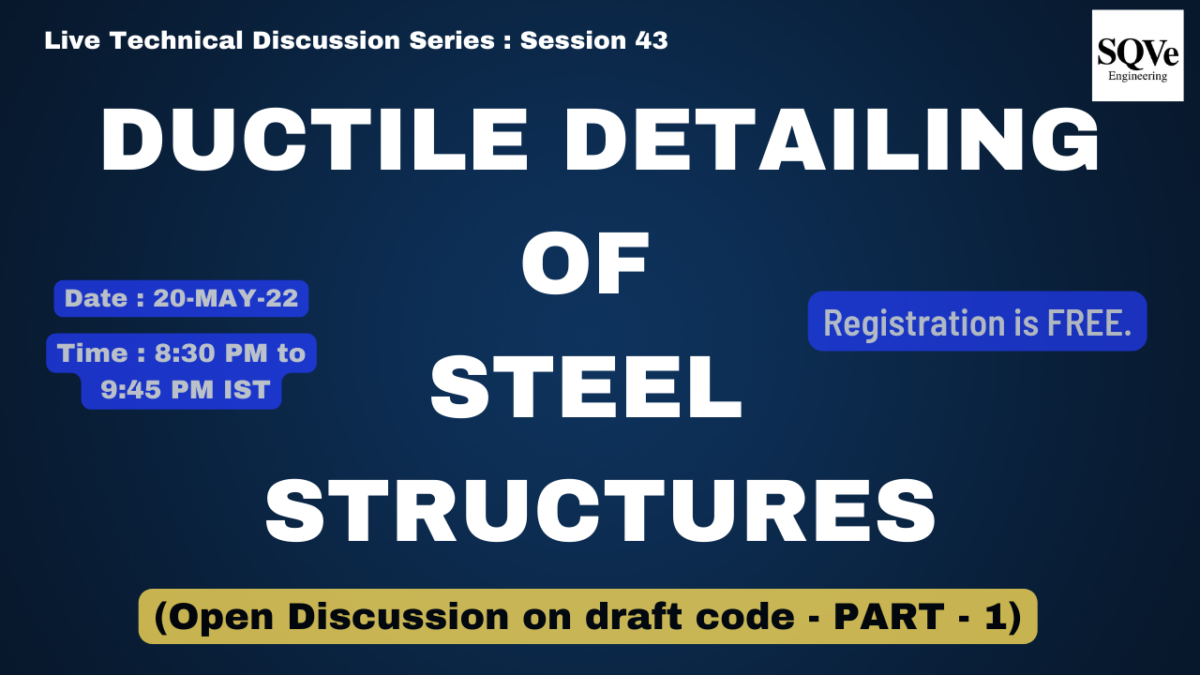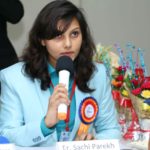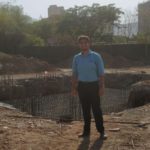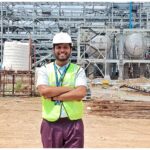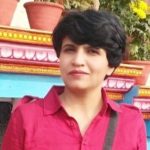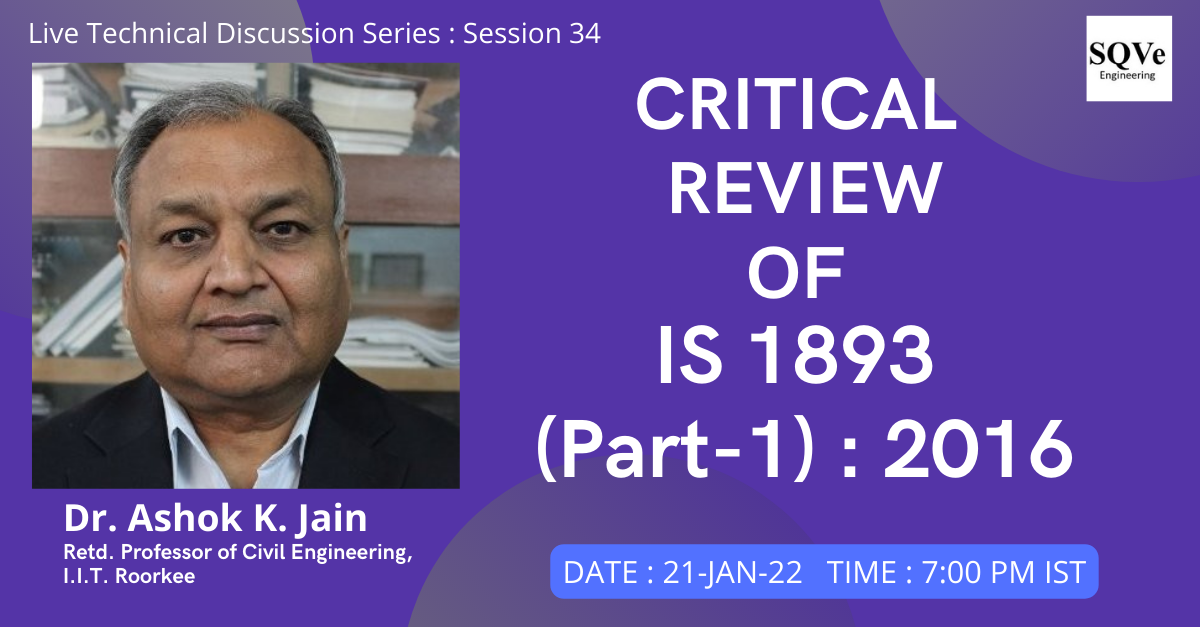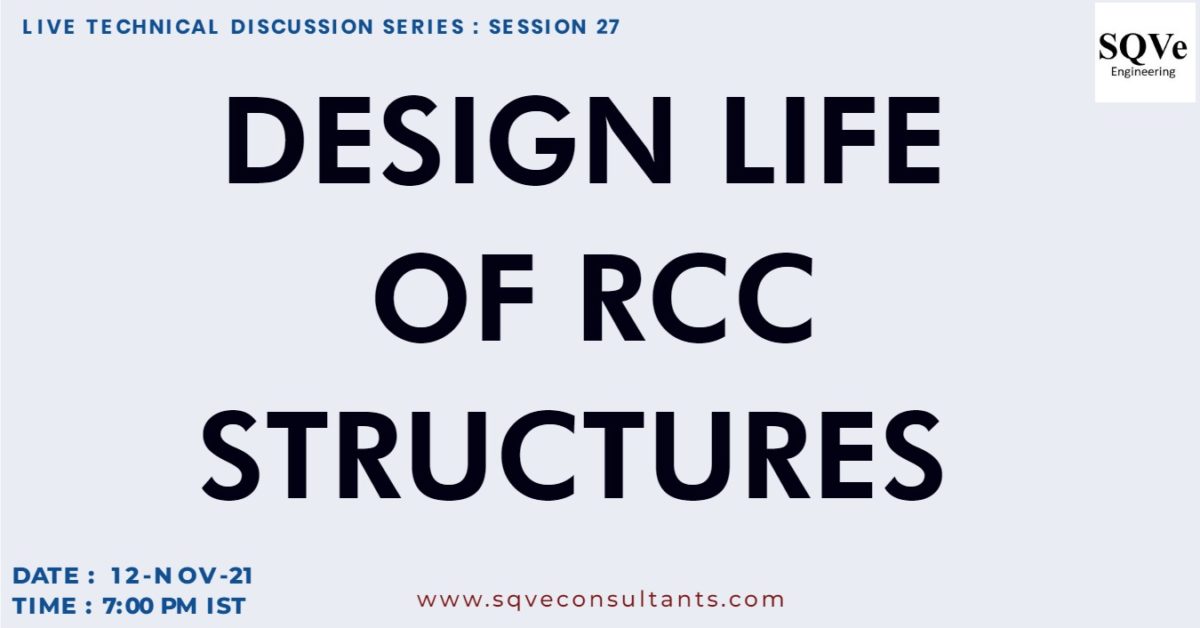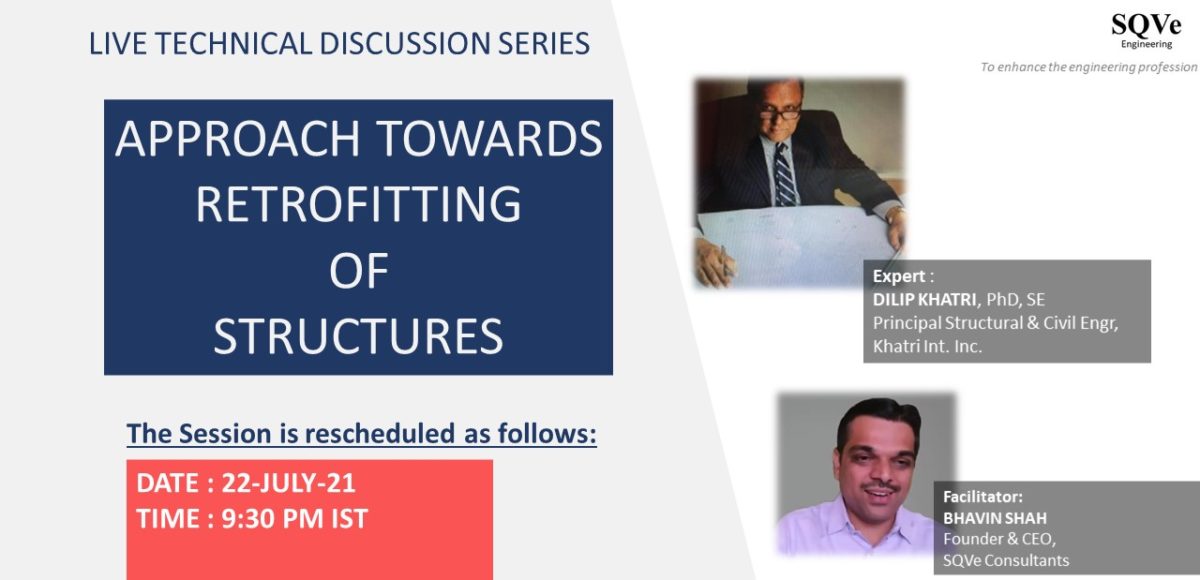INTRODUCTION
LIVE TECHNICAL DISCUSSION SERIES
For steel structures, earthquake resistant design related specifications / details are mentioned in section 12 of IS 800 : 2007. Also, there are few modifications made in NBC 2016 with respect to earthquake resistant design provisions for steel structures.
Recently, BIS has published a draft code for earthquake resistant design and detailing of steel buildings, similar to IS 13920 for RCC structures.
Title of the document : Earthquake Resistant Design and Detailing of Steel Buildings
Last date for comments: 23-JUNE-2022
Link for downloading the document: https://www.services.bis.gov.in/php/BIS_2.0/dgdashboard/draft/darftdetailcomm/210/3/CED39
It is going to be very important standard for earthquake resistant design and detailing of steel structures.
We are planning to have couple of live discussions on the draft code. In the first part, we will have quick overview of the code and will discuss few important details, mentioned in the document. In the next part, we may have more detailed discussions on the draft code.
In the upcoming live technical discussion, Mr. Bhavin Shah will conduct the open discussion.
In the following registration form, you may share the specific discussion points. The same would help us to structure the discussion.
For inquiries related to sponsoring the events may be sent to email address: sponsor@sqveconsultants.com
Schedule
DATE : 20-MAY-22
TIME : 8:30 PM IST TO 9:45 PM IST
Brief about Expert
Bhavin Shah – Founder & CEO, SQVe Consultants
He is passionate about Engineering profession with two decades of experience. He is having a dream for enhancing the engineering profession in different organisations. He completed graduation in Civil Engineering and Masters in Structures from Sardar Patel University. He is having unique experience of working in the specialized firm of civil / structural consultancy which grew as multidisciplinary firm (VMS), large multidisciplinary firm (L&T Chiyoda Ltd.) and owner based engineering set up (Adani Infra (I) Ltd.). He worked in different organisations at different levels, starting from junior design engineer to CEO. He is Founder & CEO of SQVe Consultants. He is pursuing Ph.D. in Structural Engineering related to earthquake resistant design of industrial steel structures.
HOW TO REGISTER FOR THE EVENT?
Registration is FREE. You may share the specific doubts/queries/discussion points which may be discussed during the session. It would help us to structure the discussion.
Feedback of few participants for previous online courses"
